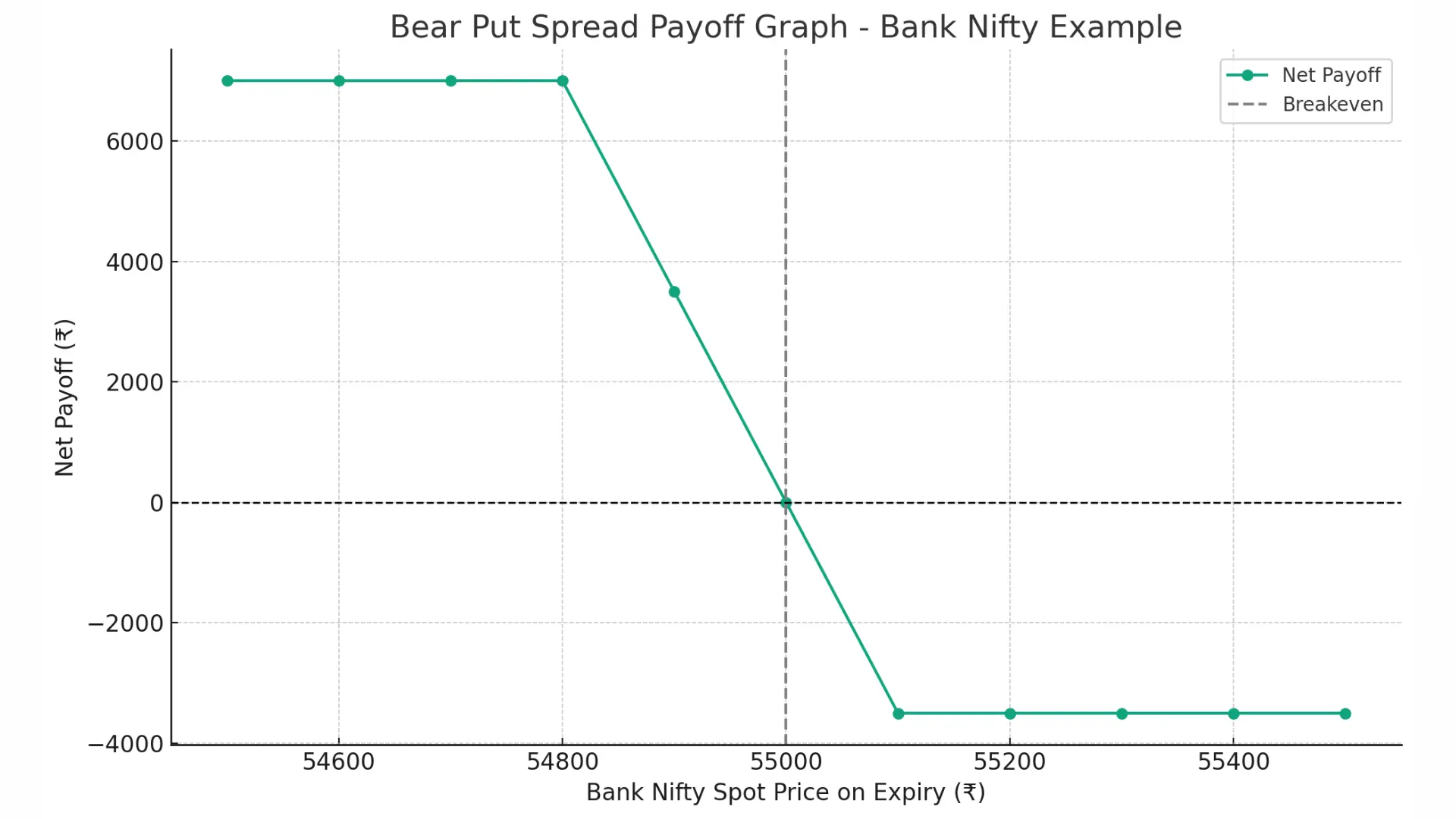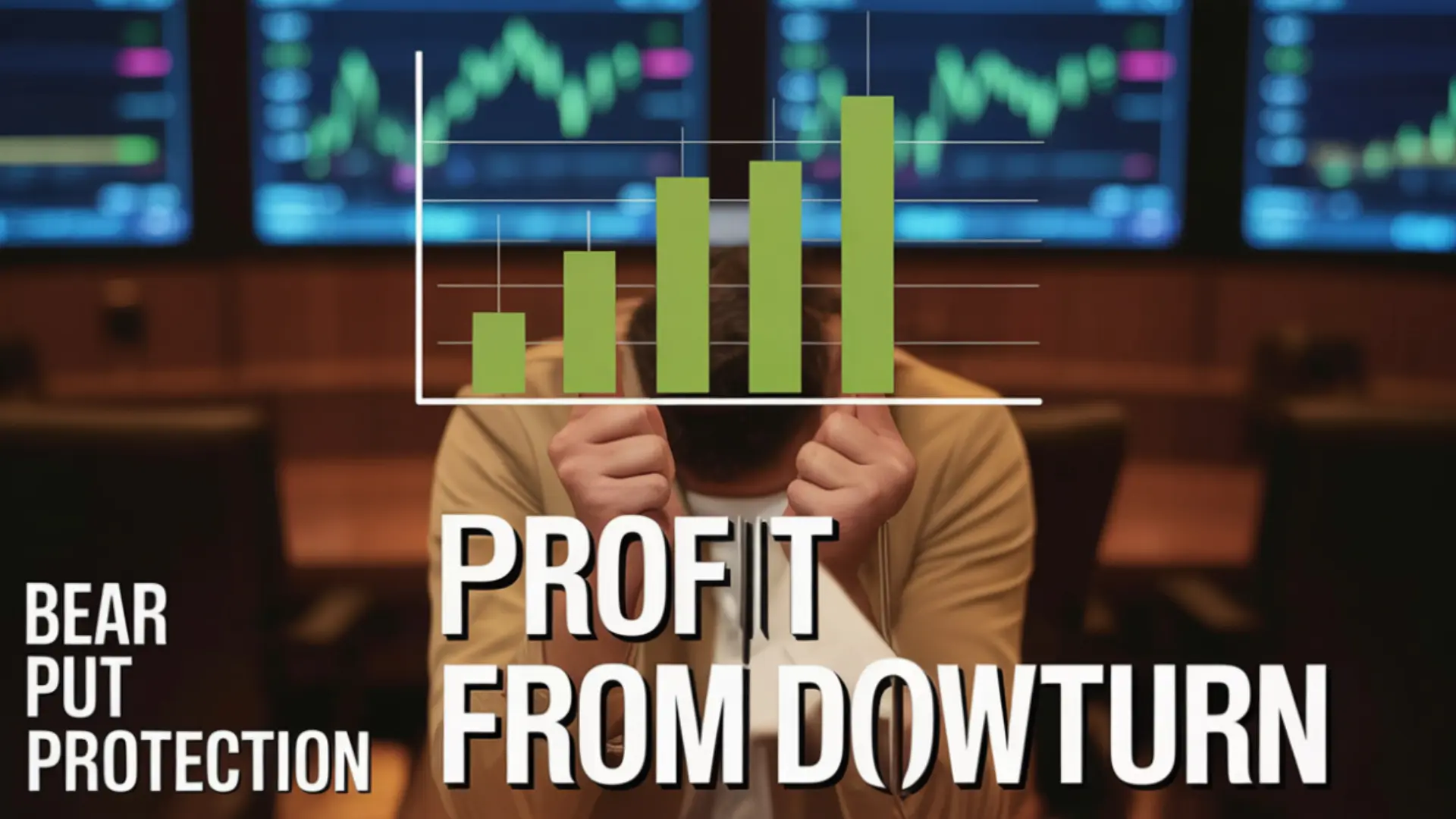📚 Table of Contents
- ✅ Overview
- 🛠 How It Works
- 💡 When to Use
- 📊 Real-World Example (NIFTY)
- 📘 Stock Example
- 🏦 Bank Nifty Example
- 📌 Summary
- ✅ Pros and Cons
- 🔚 Exit Strategy
- 🔄 Related Strategies
- 📌 Final Thoughts
✅ Overview
The Bear Put Spread—also called a Bear Put Debit Spread—is an advanced options trading strategy. It is used when a trader expects a moderate decline in the price of an underlying asset. The setup involves buying an In-the-Money (ITM) Put and selling an Out-of-the-Money (OTM) Put with the same expiry.
🧠 Key Features:
- Strategy Type: Bearish
- Skill Level: Advanced
- Positions: ITM Put Buy + OTM Put Sell
- Risk: Limited
- Reward: Limited
- Breakeven: Strike Price of Long Put – Net Premium Paid
🛠 How It Works
Unlike a Bear Call Spread, the Bear Put Spread involves a net debit because you're paying a higher premium for the long put than what you receive from selling the short put. This results in a capped risk and capped reward.
Traders implement this strategy when they expect the underlying asset to fall slightly to moderately before expiry.
💡 When to Use Bear Put Spread
- When you are moderately bearish on the underlying asset
- When you want to limit downside risk
- When you want to reduce the cost of a single long put
📊 Real-World Example (NIFTY)
Assume NIFTY is trading at ₹25,400. A trader sets up:
| Order | Option | Strike Price | Action |
|---|---|---|---|
| Buy | NIFTY18APR25600PE | ₹25,600 | ITM Put (Buy) |
| Sell | NIFTY18APR25200PE | ₹25,200 | OTM Put (Sell) |
- Profit: (Strike Difference – Net Premium Paid) × Lot Size
- Loss: Net Premium Paid
If NIFTY rises or stays flat:
Both options expire worthless, resulting in maximum loss, which is the net premium.
📘 Example: Stock at ₹38
Stock trading at ₹38 in June. You anticipate a decline.
| Option | Premium | Action |
|---|---|---|
| July ₹40 Put | ₹3 | Buy |
| July ₹35 Put | ₹1 | Sell |
Lot Size: 100 shares
Net Premium Paid: ₹200
🔍 Scenarios
- Stock stays at ₹38
- Long ₹40 Put has ₹2 intrinsic value → ₹200 gain
- Short ₹35 Put expires worthless
- Net gain = ₹0 (breakeven)
2. Stock rises to ₹42
Both options expire worthless
Maximum loss = ₹200
3. Stock falls to ₹34
Long Put gains ₹600
Short Put loses ₹100
Net Profit = ₹300 → Maximum Profit
🏦 Example: Bank Nifty
| Spot Price | ₹54,900 |
| Lot Size | 35 |
| Buy ₹55,100 Put | Premium ₹500 |
| Sell ₹54,800 Put | Premium ₹400 |
| Net Premium | ₹100 × 35 = ₹3,500 |
| Breakeven | ₹55,000 |
| Max Profit | ₹7,000 |
| Max Loss | ₹3,500 |
📈 Payoff Scenarios

| Expiry Price | Net Profit/Loss |
|---|---|
| ₹54,600 | ₹7,000 (Max Profit) |
| ₹54,800 | ₹7,000 |
| ₹55,000 | ₹0 (Breakeven) |
| ₹55,200 | -₹2,500 (Max Loss) |
📌 Summary
| Market Outlook | Bearish |
| Strategy Type | Net Debit |
| Risk | Limited |
| Reward | Limited |
| Breakeven | Long Put Strike – Net Premium |
✅ Pros and Cons
✅ Advantages:
- Risk is capped
- Lower cost than buying a standalone put
- Ideal for moderately bearish forecasts
❌ Disadvantages:
- Profit potential is limited
- Requires price to move moderately lower
🔚 Exit Strategy
Close the strategy by:
- Buying back the sold Put
- Selling the bought Put
🔄 Related Strategies
📌 Final Thoughts
The Bear Put Spread is an efficient bearish strategy for traders expecting moderate price declines. With clearly defined risk and reward, it offers a strategic way to profit in a falling market.

